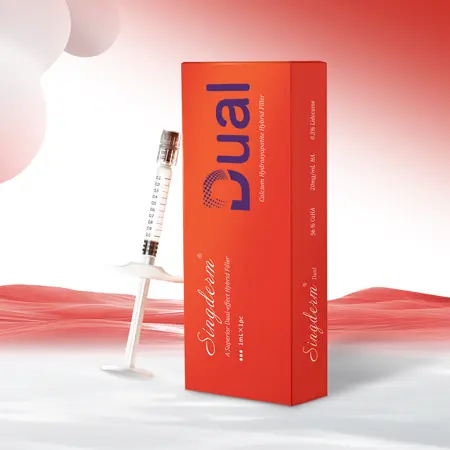When it comes to non-surgical facial rejuvenation, two major players dominate the world of dermal fillers: Calcium Hydroxylapatite (CaHA) and Hyaluronic Acid (HA). If you’re wondering which one is right for you—or your patients—this guide breaks it all down: what they are, how they work, and which is better for specific needs.
Hyaluronic acid is a naturally occurring substance in the body, especially found in the skin, connective tissues, and eyes. It holds moisture like a sponge—one gram of HA can bind up to six liters of water!
Key Benefits of HA collagen Fillers
Immediate volume restoration
Smooths fine lines and wrinkles
Enhances lips, cheeks, jawline, and under eyes
Fully reversible with hyaluronidase
Suitable for all skin types

Calcium hydroxylapatite is a mineral-like compound naturally found in bones and teeth. When used in fillers, it’s suspended in a gel carrier and injected into the skin to stimulate collagen production while providing immediate volume.
Key Benefits of Calcium Hydroxylapatite Fillers
Longer-lasting results (12–18 months or more)
Stimulates collagen for natural firming over time
Great for deep lines, volume loss, and contouring
Thicker consistency ideal for mid-face and hands

Let’s break down the major differences in a side-by-side comparison:
| Feature | Hyaluronic Acid (HA) | Calcium Hydroxylapatite (CaHA) |
Texture | Soft, gel-like | Thicker, creamy |
Longevity | 6–12 months | 12–18 months (or more) |
Reversibility | Yes (with hyaluronidase) | No |
Stimulation of Collagen | Minimal | High |
Best for | Lips, fine lines, tear troughs | Jawline, cheeks, nasolabial folds, hands |
Onset of Results | Immediate | Immediate + long-term improvement |
Ideal Patient Age | 20s–40s | 30s–60s |
Choose HA fillers if you:
Want subtle, natural-looking results
Need correction in delicate areas like under the eyes or lips
Are getting fillers for the first time
Prefer something that can be reversed if needed
Are focused on hydration and skin plumpness
Choose CaHA fillers if you:
Want stronger structural support (like for jawline sculpting)
Have deeper wrinkles or facial volume loss
Want long-term results with collagen stimulation
Are okay with non-reversible results
Prefer fewer touch-ups
Yes—you can use both types strategically in the same patient. For example:
HA for lips and under-eye volume
CaHA for cheek lift or jawline definition
Some practitioners also dilute CaHA to use it as a biostimulator or skin booster, rather than a volumizer.
Both types of fillers are generally safe when injected by a trained professional. However:
HA fillers have the safety net of reversibility
CaHA fillers last longer but need more precision due to their firmness and permanence
Always ensure fillers are injected under sterile conditions by licensed providers
There’s no one-size-fits-all answer—it depends on:
Your age and skin condition
Your aesthetic goals
The area being treated
Budget and risk tolerance
For hydration and flexibility, go with HA.
For sculpting and longevity, CaHA might be your match.
Both hyaluronic acid and calcium hydroxylapatite fillers are excellent tools in modern aesthetic medicine. Whether you're looking to gently plump or structurally define, understanding the differences between these two options helps ensure safe, satisfying, and natural-looking results.
Sclafani AP. (2008). Safety, efficacy, and utility of hyaluronic acid fillers in the periocular region. Facial Plastic Surgery Clinics of North America, 16(1), 105–115.
https://doi.org/10.1016/j.fsc.2007.10.002
Sadick, N. S. (2008). A study to determine the efficacy of calcium hydroxylapatite filler for facial rejuvenation. Journal of Drugs in Dermatology, 7(3), 248–254.
Lemperle G., Morhenn V., Charrier U. (2004). Human histology and persistence of various injectable filler substances for soft tissue augmentation. Aesthetic Plastic Surgery, 27, 354–366.
https://doi.org/10.1007/s00266-003-3022-2
American Society for Dermatologic Surgery (ASDS) – Dermal fillers overview.
https://www.asds.net/
American Society of Plastic Surgeons (ASPS) – Injectable fillers explained.
https://www.plasticsurgery.org/
International Society of Aesthetic Plastic Surgery (ISAPS) – Global statistics and trends in dermal fillers.
https://www.isaps.org/
 Call us on:
Call us on:  Email Us:
Email Us:  No. 125(E), 10th Street, Hangzhou Qiantang Area, Zhejiang, China
No. 125(E), 10th Street, Hangzhou Qiantang Area, Zhejiang, China